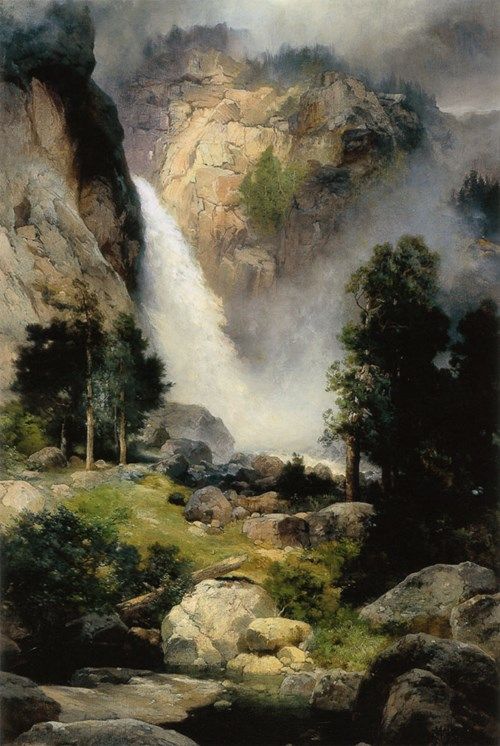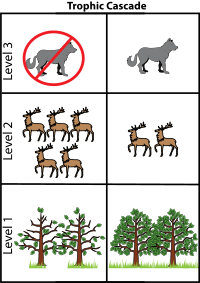Cascades
July 5th, 2019

First, The Basics.
Cascades are the standard readjustment for complex systems.
There is an *essential* distinction between the conditions that allow crises to emerge, and the particular events that trigger the cascade into crisis. — Joe Norman
Big whirls have little whirls that feed on their velocity, and little whirls have lesser whirls, and so on to viscosity. — Lewis Fry Richardson, (1922)
Interdependence.
Strong Interdependence (Fragile): Potential for global or widespread harm cascade following local stressor.
Examples:
- Infected person at a airport
- Industrial diet leads to weaker immune systems. Weaker immune systems increase chances of pandemic cascade. Fixing our agriculture problem will have untold positive ripple effects.
Weak Interdependence (Brittle): Local stress harms local conditions irreversible without cascade. Linear harm response.
Examples:
- Slowly crumbling dry autumn leaf
- Marble statue exposed to rain
General Cascades.
Saudi Barbaria will give us an illustration of a standard cascade: Barbaria can retaliate against a single company or a country (as they tried w/Canada); but cannot do so against the rest of the world. — Nassim Nicholas Taleb
Riding the Cascade: Conditions become favorable to new stable state, but system lingers in old state, until a triggering event begins a cascade.
Examples:
- What causes the avalanche? The structure of the snow sitting on the hill, or the disturbance that sets off the cascade?
We must refine the way we talk about cause and effect.
Precautionary Principle
Genetics: Small molecular changes that cascade to larger and larger scales. Genetic manipulation is a micro intervention that cascades into macro effects. This is high potential due to impact. This is high risk due to no containment protocol (risk of ruin).
There must be present circuit breakers in the case of cascades. Otherwise, Pandemic.
In issues of global risk, the question is not "what triggers the cascade?" But rather "What interrupts it?" — Joe Norman
When to invoke precautionary principle: We cannot reasonably establish upper bound on scope and harm and can reasonably expect contagion and cascade dynamics due to known properties of a system. Interactions in an environment are not predictable!
Ask yourself:
- Is it contagious?
- If so, are there circuit breakers?
Responsible researchers have a deep respect for uncertainty.
Trophic Cascades.
Trophic Cascades are indirect interactions that can control ecosystems. This occurs when a trophic level in a food web is suppressed.
- Top-down Cascade. Top consumer/predator controls the primary consumer population. In turn, the primary producer population thrives. The removal of the top predator can alter the food web dynamics (wolves).
- Bottom-up Cascade. The population of primary producers will always control the increase/decrease of the energy in the higher trophic levels (plants, phytoplankton, zooplankton).
- Subsidy Cascade. Populations at one trophic level can be supplemented by external food (livestock).
What do gray wolves, elephants, and parrotfish have in common? They're all keystone species, which means they have an especially large impact on their habitat.
If you remove the keystone you risk the whole thing tumbling down.
Grey Wolves.
Wolves prey on Elk. Without Wolves, Elk settle down and display limited nomadic behavior. Elk consume most of the food resources around their settlements. These resources are particularly near river banks. When their food resources were depleted, they would move. When Wolves were re-introduced, Elk behavior changed. Resources near river banks begin to flourish once again.

Beavers.
Beavers build dams. Dams slow the flow of rivers. Slowing the flow of rivers prevents flash floods. Slow rivers, particularly those moving incredible slow, offer a wide range of habitats for species to flourish.
Elephants.
Elephants are the gardeners of the forest, consuming resources and defecating. Without elephants certain tree species tend to outcompete plants in the pursuit of light.
Elephant defecation is a resource for an ecosystem that enriches the soil.
Elephant nomadic behavior helps spread seeds and fertilize new soil.
Parrotfish.
Parrotfish plucks algae off coral. Without Parrotfish, algae would suffocate coral. Without coral there is no reef.
Videos and Audio.
Mike Phillips - How to Save a Species (Tim Ferriss Show Podcast). "There is a rhythm to nature. If you remove on piece it gets interrupted. When you make nature predictable it becomes far less diverse."
— —
How Wolves Change Rivers. This short video (< 5 minutes) has been viewed more than 40 million times. It’s an incredible visual portrait of how wolves can help—literally—change the course of rivers. Though highly simplified, this video showcases a beautiful, critically important, and woefully underappreciated phenomenon called trophic cascade. I have just one edit suggestion for the video owner, which would be to expand the narration mention of "deer" to "deer and elk." For another quick video summary of trophic cascade and "keystone species," I suggest 3 Animals That Keep Their Whole Ecosystem Together. I hoped to be a marine biologist for more than a decade, and I’ve spent a good deal of time studying sharks and their role in trophic cascade. Past podcast guests like Stewart Brand, arguably the most interesting man in the world, have looked at the role of elephants/pachyderms in top-down ecosystem dynamics and preservation/restoration. In the last two years, I’ve become most interested in the gray wolf and other terrestrial apex predators. More on this soon...
— —
Much of these are notes taken from Tweets, talks, and ‘lekctures' by Joe Norman and Nassim Nicholas Taleb.
"Cascade Falls, Yosemite" by Thomas Moran. Painting from ArtRenewal.org.
Keep in touch!